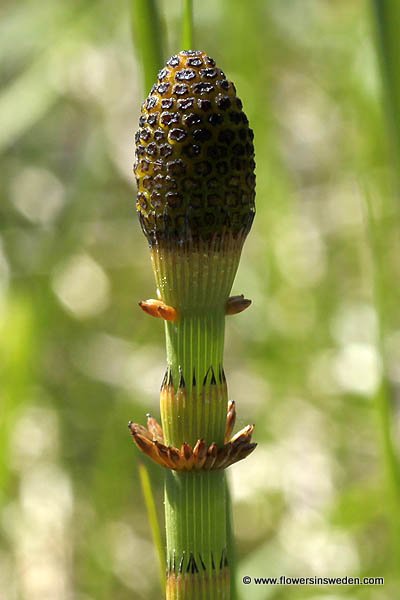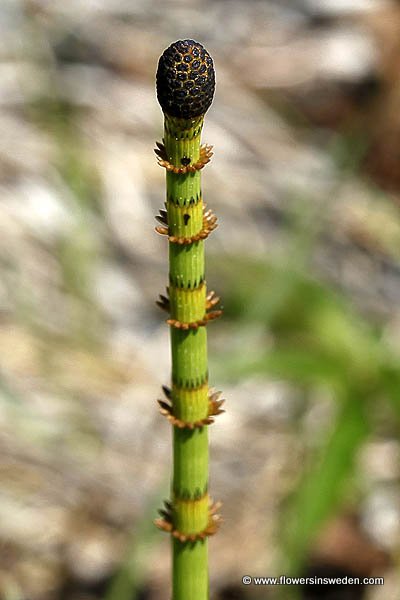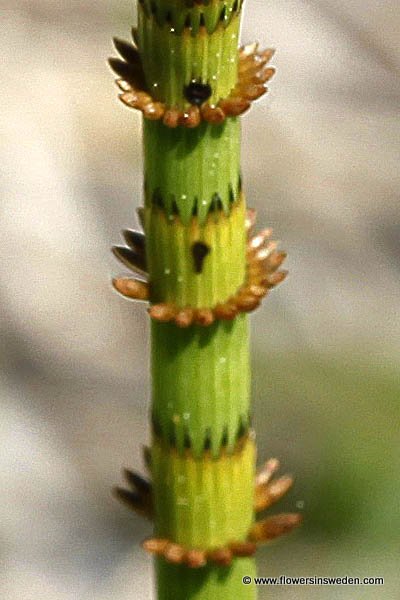
| Scientific name: | Equisetum fluviatile L. | |
| Synonym name: | Equisetum limosum L. | |
| Swedish name: | Sjöfräken, dyfräken | |
| German name: | Teich-Schachtelhalm, Schlamm-Schachtelhalm | |
| Nederlandse naam: | Holpijp | |
| English name: | Water horsetail | |
| Plant Family: | Equisetaceae, Horsetail family, Fräkenväxter |

|
| Life form: | Herbaceous perennial, creeping rhizomes, often with deep roots. | |
| Stems: | Erect dark green stems 2-8 mm in diameter, smooth, with about 10-30 fine ridges. At each joint, the stem has a whorl of tiny, black-tipped scale leaves 5-10 mm long; 80% of the stem diameter hollow; ertile and sterile stems look alike. | |
| Leaves: | At each joint, the stem has a whorl of tiny, black-tipped scale leaves 5-10 mm long | |
| Flowers: | No flowers; instead, cone-like spore-producing structures develop at the ends of the fertile stems; cones are yellowish-green, 1-2 cm long and 1 cm broad, with numerous scales in dense whorls. | |
| Flowering Period: | June, July | |
| Fruits: | Produces spores instead of fruit | |
| Habitat: | Shallow water, marshes, bogs, and streams |

Derivation of the botanical name: Equisetum from the Latin equis, "horse" and seta, "bristle". Equisetum is a primitive plant, a descendat of huge trees that lived in the Paleozoic era (542–251 million years ago). It produces two different stalks. One is the fertile "joint-grass", the other is the sterile "horse-tail". The fertile stalk produces a cone-like structure at the top, which is covered with spore-producing scales. fluviatile, of or belonging to a river. limosum, of marshy or muddy places.

|